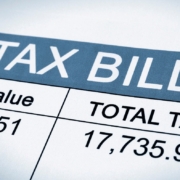What’s Next for the Child Tax Credit? Families Want to Know
- Learn how Congress changed the child tax credit in response to the COVID-19 pandemic.
- Find out what those in government think about the future of the child tax credit.
- Discover how families used their advance child tax credit dollars.
- Find out what you should do with Letter 6419.
December 15th, 2021 marked the last deposit date for the child tax credit payment expanded under the American Rescue Plan (ARP). Many had hoped the program would be continued. However, political leaders are struggling to find a way forward that makes the majority of Congress happy. As a result, many families wait and wonder what will come next.
COVID-19 changes to the child tax credit
Though a child tax credit has existed since 1997, the global pandemic forced Congress to significantly revise it to offer parents financial relief. Previously, eligible families received it as a single, partially refundable amount at tax time. This year, the ARP sent out checks on a monthly basis and made the credit fully refundable. It also substantially expanded the credit from $2,000 to $3,000 annually per child. Additionally, families with children under the age of 6 received a $600 bonus.
The impact of the revision was undeniable. According to a report issued by the Center on Poverty and Social Policy at Columbia University in late October, the payments of up to $300 per child deposited in bank accounts (along with other COVID-19-related government support) contributed to a 4.6 percentage point (26 percent reduction) in child poverty in September of 2021 alone.
Previous reports documented similar results. An August report on its impact on material hardship reported that the “more generous and inclusive monthly payment marks a historic, albeit temporary shift in the American welfare state’s treatment of low-income families.”

What’s next for the child tax credit?
With the addition of the word “temporary” in the report’s main takeaway, the center shines a light on the question of what happens next, now that the payments have stopped being sent. Both Democrats and Republicans had backed the credit through the Tax Cuts and Jobs Act under the Trump administration. There is also bipartisan support for some type of continuation. However, the devil is in the details and consensus has been hard to find.
Much of the disagreement exists about how to move forward. This disagreement has revolved around whether the tax credit should be tied to a work requirement. There are also other issues surrounding what agency should be responsible for its administration and to whom and how it should be distributed.
Senator Mitt Romney has proposed that all families should receive monthly cash regardless of income. Those above eligible income thresholds would reconcile the difference on their income tax return. Others object that it doesn’t limit the benefit to working families and those paying into the tax system.
Still, others insist that there must be an oversight from social service agencies. This would ensure that children are getting the benefit of the payments. Senator Joe Manchin called attention to the many grandparents who have assumed responsibility for raising their grandchildren. He insists on a mechanism to ensure that the money follows the child rather than their parent.
How families used the advance credit
To that last point, the Census Bureau conducted a survey of American households to see how they spent their child tax credit checks. The majority used the cash for household expenses including rent or mortgage payments, groceries, and utilities.
Four in ten used the first few payments to pay down their debt. Many others used it to pay for childcare and school supplies. Others used it to provide extras that they might otherwise not have been able to afford, including music lessons, entertainment, or occasional take-out food during the pandemic.
What’s next for families?
While Congress works its way through the challenges of finding a replacement, many families for whom the extra money made a real difference dread the coming months, particularly with inflation rising. There are also some who received the money and believe they may owe some of it back with their tax return
However, the monthly payments were “advance” credit payments and any credit amount you are entitled to and didn’t receive in advance will be credited to your 2021 tax return. So, you did not lose out on anything, you just did not get it in advance.
The IRS will be sending Letter 6419 which will show the total amount you received in advance payments; you will need to reconcile the advance payments with the amount you are entitled to. Don’t discard that letter and keep it with your other tax records and documents.
If your family received advance child tax credit funds, you are not alone in wondering what will come next from Congress for 2022. Need help with your upcoming tax return? Call Fiducial at 1-866-FIDUCIAL or make an appointment at one of our office locations to discuss your situation.
Ready to book an appointment now? Click here. Know someone who might need our services? We love referrals!
For more small business COVID-19 resources, visit Fiducial’s Coronavirus Update Center to find information on SBA loans, tax updates, the Paycheck Protection Program, paid sick and family leave.









